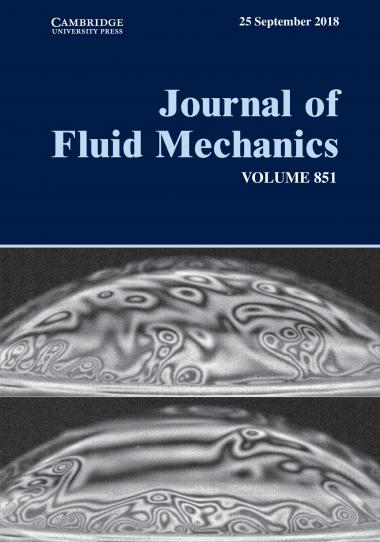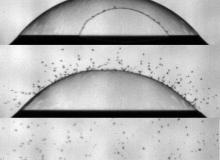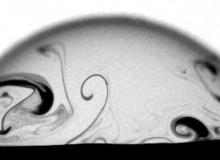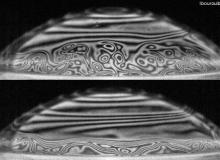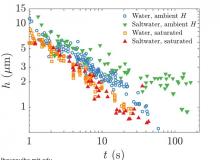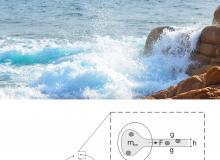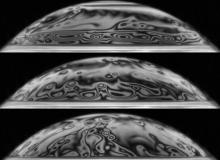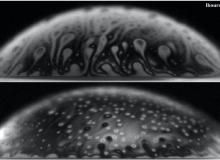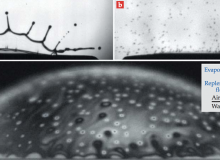Bubbles are ubiquitous in industrial and environmental processes, indoors and outdoors, and have an important impact on a wide range of systems. They can be beneficial in mixing bulk water, they contribute significantly to the planetary-scale transfer of chemical and organic compounds from water bodies to the atmosphere and they are also a source of illness and contamination. Upon reaching the air–water interface, bubbles can be the source of hundreds of droplets transporting the organisms, chemicals or particles from the bulk in which they traveled to the air that we breathe. An understanding of the fundamental physics governing this important source of droplets starts by understanding the formation, ageing and death of bubbles at the air–water interface. It is important to understand the fundamental physics portion of the problem as base-state prior to studying the effect of contamination. The base-state is then compared to the bubble physics in various states of contamination to elucidate how organisms or contaminants affect the underlying interfacial dynamics, and in turn, if and how such effects can shape the dispersal of the contaminants and organisms. More recently, we showed how physically or biologically induced Marangoni effects can sustain bubble lifetimes dramatically, with profound implications on dispersal of contaminants and life.
Papers:
Bourouiba, L. (2021) The fluid dynamics of disease transmission. Annual Review of Fluid Mechanics. 53:473-508. PDF.
Montgomery, J. (2020) Calibrating Schlieren imaging for understanding local film deformation for a range of wetting and intrusions in soap films. MIT MSc.Thesis, Supervisor Bourouiba, L.
Poulain, S. and Bourouiba, L. (2019) Disease transmission via drops and bubbles. Physics Today 72:70. PDF
Su, J. MIT (2018) Biological and particulate contaminants in interfaces. MIT MSc. Thesis, Supervisor Bourouiba, L.
Poulain, S. and Bourouiba, L. (2018) Biosurfactants change the thinning of contaminated bubbles at bacteria-laden water interfaces. Physical Review Letters. 121:204502. PDF.
Selected as PRL's Editor's Suggestion. Covered by MIT News and other outlets.
Poulain, S., Villermaux, E., and Bourouiba, L. (2018) Ageing and burst of surface bubbles. Journal of Fluid Mechanics. 851: 636-671. PDF
Selected for volume cover page: PDF.
Jung, S., Staples, S., Dabiri, J., Marsden, A., Prakash, M., Davis, K., Shadden, S., Savin, T., Bourouiba, L., and Sznitman, J. (2016) Research Trends in Biological Fluid Dynamics. US National Committee on Theoretical and Applied Mechanics (USN/TAM) Invited Report on Recent Trends in Mechanics. Publications of the US National Academies of Sciences, Engineering, and Medicine. PDF
Walls, P., Bird, J. and Bourouiba, L. (2014) Moving with bubbles: a review of the interactions between bubbles and the microorganisms that surround them. Integrative and Comparative Biology. 54:1014–1025. PDF
Bourouiba, L. and Bush, J. W. M. (2013) Drops and bubbles in the environment. Handbook of Environmental Fluid Dynamics, Volume I: Ed: H.J.S. Fernando, CRC Press, Taylor & Francis Book Inc. Book, PDF

